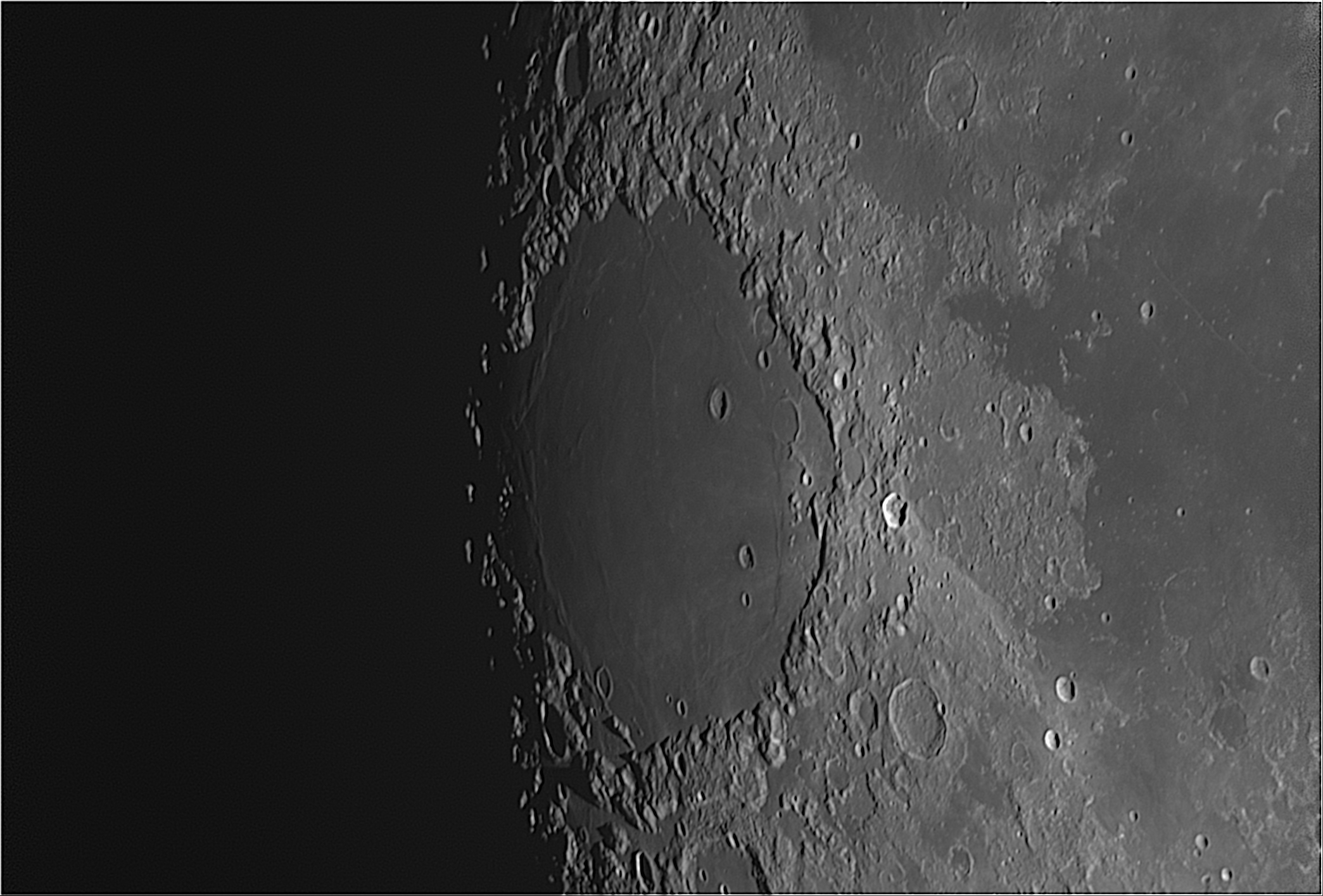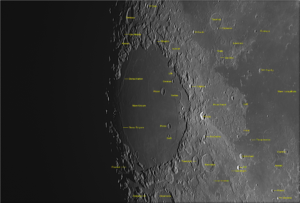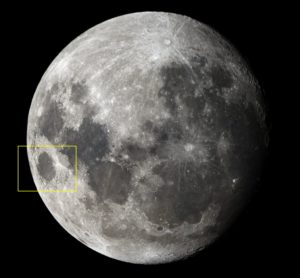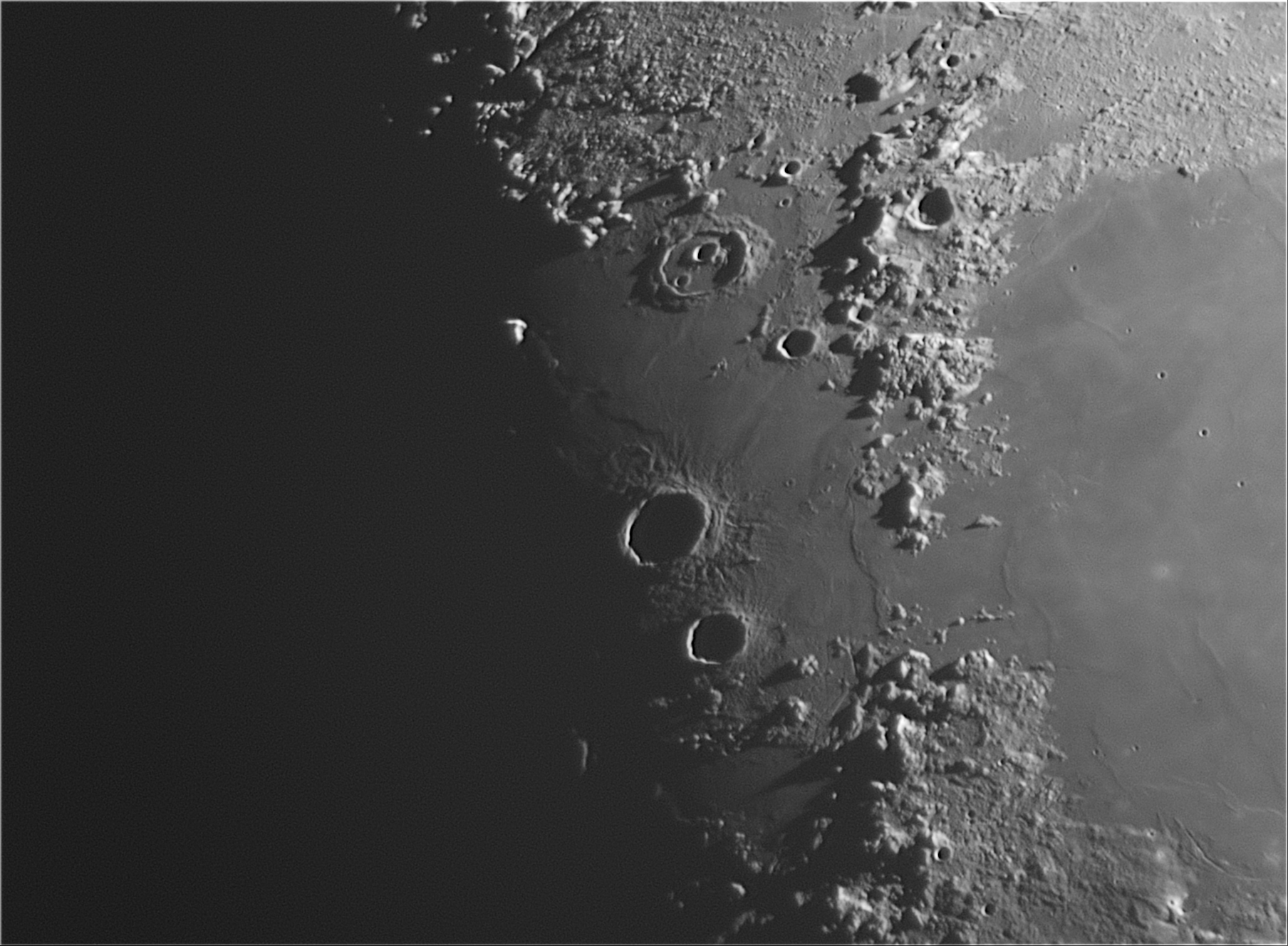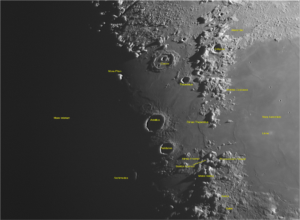Since I am still working on getting my deep space camera working, the PTO remains configured for planetary imaging. Over the past week, in between the clouds and fireworks, I’ve been able to get images of Jupiter, Saturn and Mars. The only one I could not get was Venus; the afternoon clouds would just not cooperate.
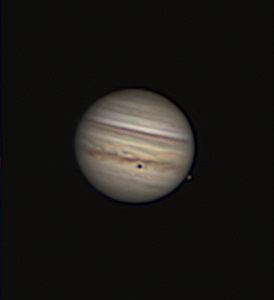
|
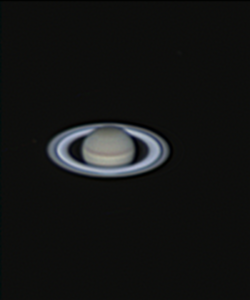
|
I was able to image Jupiter last night (8 Jul). It transits the meridian around 2030(L) so once the clouds cleared it was close to my western tree line. I imaged it right up to the time it was obscured by leaves. The obvious spot on the cloud tops is the shadow of the Jovian moon Io. The moon is just visible to the right of the planet as it starts to pass in front of the planet.
Saturn and Mars I imaged on the evening of the 4th once the flashing stopped and smoke of the fireworks cleared. This time there was no evidence of Saturn’s atmospheric storm. It may have dissipated or it may just be on the other side of the planet.
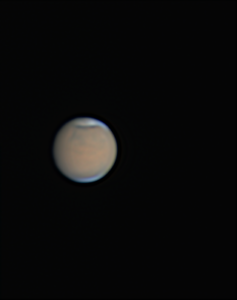
|
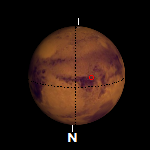
|
The map of Mars(r) shows the same central meridian as the image(l) and illustrates the surface markings that would normally be visible. Although recent atmospheric readings by the Curiosity rover indicates the dust storm may be starting to wind down, the planet wide dust storm is still obscuring our Earth based view. It may take some time for the dust to slowly settle out of the atmosphere. All the images are south at the top.
